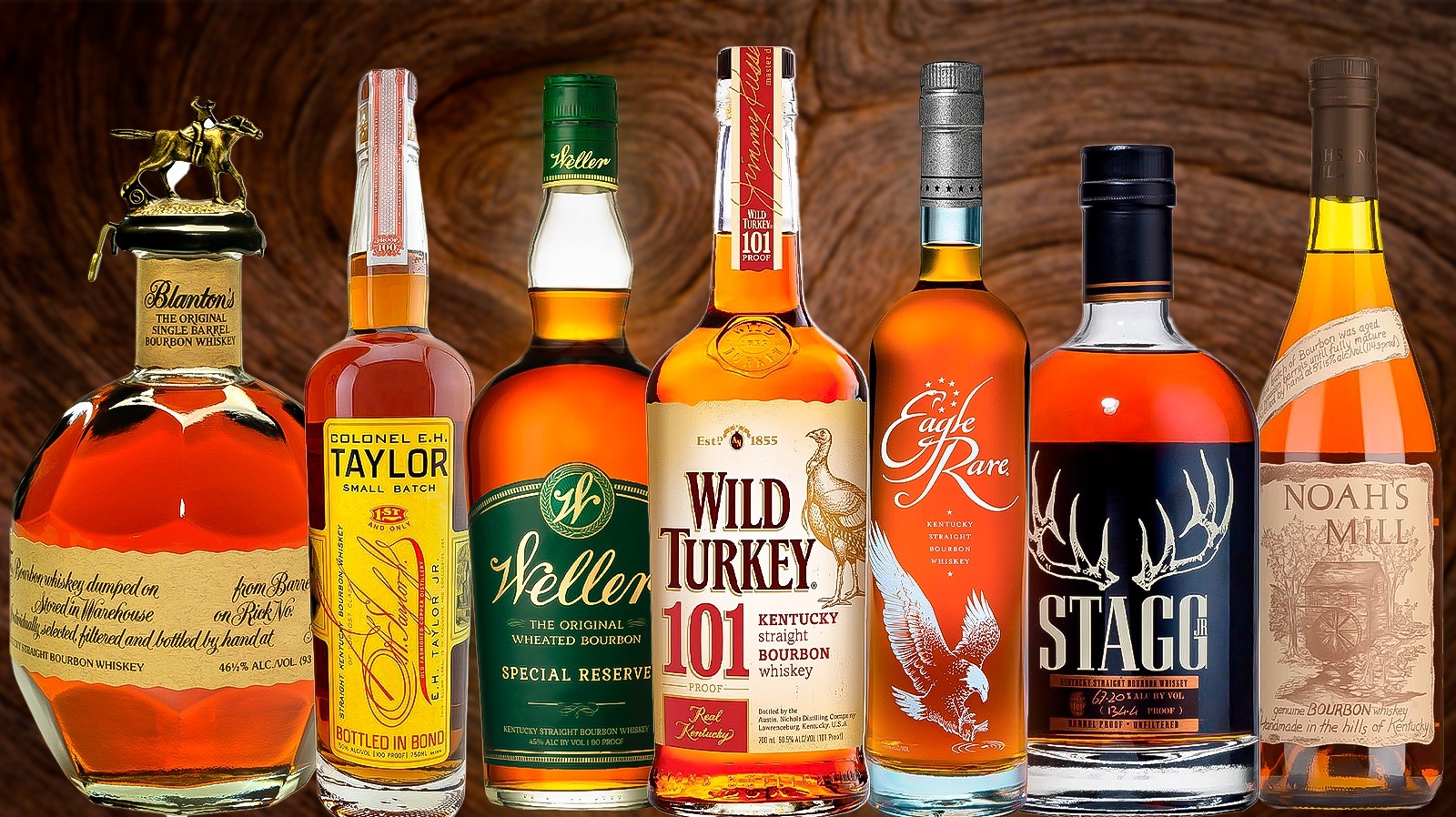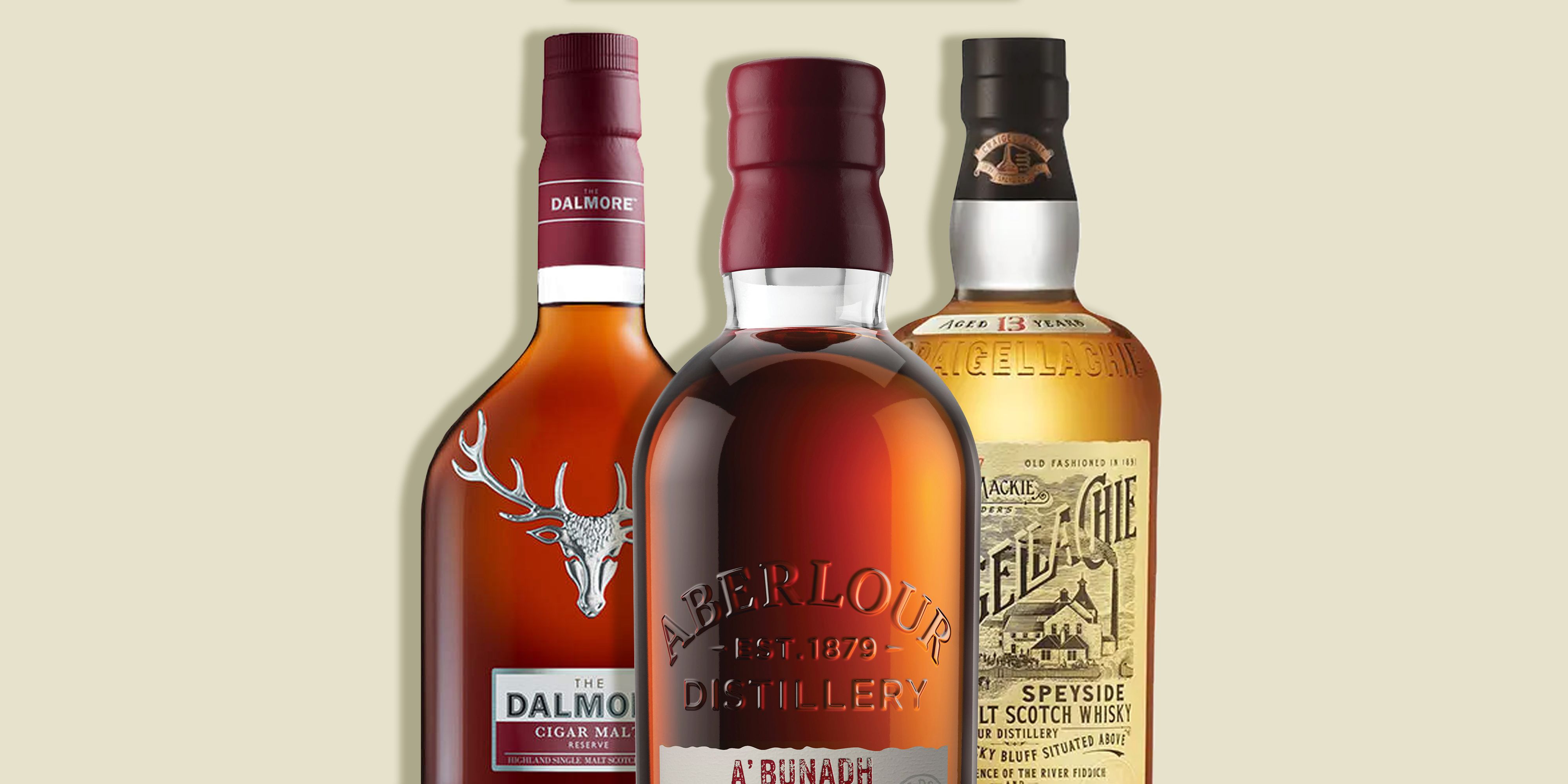Whiskey, a beloved spirit enjoyed by connoisseurs and casual drinkers alike, offers a diverse range of flavors and styles. From the smoky depths of Scotch to the smooth sweetness of Bourbon, there’s a whiskey to suit every palate. In this comprehensive guide, we’ll delve into the fascinating world of whiskey, exploring its various types, production methods, and unique characteristics.
How many types of whiskey are there in the world?

The question of how many types of whiskey exist in the world is complex due to the vast array of styles, variations, and regional differences in production. While it’s challenging to provide an exact number, we can categorize whiskey into several main types based on factors such as ingredients, production methods, and geographical origins.
Whiskey Types
Whiskey comes in many forms, each with its own distinct qualities and production techniques. Here are 9 main types of whiskey:
Scotch Whisky

Origin: Scotland
Characteristics: Scotch whisky is known for its complex flavors, which can range from smoky and peaty to fruity and floral. It must be distilled and aged in Scotland for a minimum of three years.
Scotch Whisky, a renowned spirit originating from Scotland, is subject to stringent regulations to earn its prestigious title. Here’s what defines Scotch Whisky:
- Origin and Regulation: All Whisky produced in Scotland is labeled as Scotch, but it must meet specific criteria outlined by Scottish law. These regulations ensure the quality and authenticity of Scotch Whisky.
- Aging Requirements: Scotch Whisky must age for a minimum of three years in wooden casks. This maturation process allows the spirit to develop its distinctive flavors and character over time.
- Minimum Alcohol Content: Scotch Whisky must be bottled at a minimum of 40% alcohol by volume (ABV). This standard ensures a consistent strength across different Scotch varieties.
- Classification and Styles: Scotch Whisky is classified into five main styles: single malt, blended malt, single grain, blended grain, and blended. Each style offers a unique flavor profile and characteristics.
- Variety Within Regions: Scotch is produced in five key regions within Scotland: Speyside, Highlands, Lowlands, Islay, and Campbeltown. Each region imparts its own influence on the flavor of the Whisky. For example, Islay is renowned for its peaty and smoky Scotches, achieved by drying barley with heated peat briquettes.
- Diverse Production Methods: Single malts are crafted at a single distillery using 100% malted barley. Blended malts can be sourced from multiple distilleries but are still composed entirely of malted barley. Single grains are made at one distillery and may include various grains like barley, wheat, rye, and corn. Blended grains combine grains from multiple distilleries.
Scotch Whisky’s complexity and rich history make it a fascinating subject for exploration. From its diverse range of flavors to its traditional production methods, Scotch enthusiasts can delve deeper into its intricacies through dedicated guides and resources.
Irish Whiskey
Origin: Ireland
Characteristics: Irish whiskey is typically smoother and lighter than Scotch, with notes of honey, vanilla, and caramel. It must be distilled and aged in Ireland for at least three years.
Irish Whiskey holds a significant place in the history of Whisky-making, with the Irish claiming its invention before its journey to Scotland. Here’s what distinguishes Irish Whiskey:
- Origin and Tradition: Irish Whiskey must be crafted within the borders of Ireland, adhering to centuries-old traditions and methods. This geographical indication ensures the authenticity and quality of Irish Whiskey.
- Ingredients and Aging: Unlike Scotch, which primarily uses peat fires for drying barley, Irish Whiskey often employs ovens. This distinction contributes to a smoother, less smoky flavor profile. Irish Whiskey may contain a blend of malted or unmalted barley, along with other grains such as rye, wheat, and corn. It must be aged for a minimum of three years in oak casks, allowing the spirit to develop depth and complexity.
- Triple Distillation: One hallmark of Irish Whiskey production is the practice of triple distillation. Most Scotch Whiskies undergo a double distillation process, while Irish Whiskey is typically distilled three times. This additional distillation contributes to a lighter and smoother character, making Irish Whiskey more approachable, akin to American Whiskey.
- Minimum Alcohol Content: Similar to Scotch, Irish Whiskey must be bottled at a minimum of 40% alcohol by volume (ABV). This standard ensures consistency and potency across different Irish Whiskey brands.
Irish Whiskey’s triple distillation and distinct drying methods set it apart from its Scottish counterpart. With its smoothness and approachability, Irish Whiskey appeals to both seasoned connoisseurs and newcomers to the world of Whiskey.
Bourbon Whiskey

Origin: United States
Characteristics: Bourbon whiskey is characterized by its sweet and rich flavor profile, with notes of caramel, vanilla, and oak. It must be made from at least 51% corn and aged in new charred oak barrels.
Bourbon Whiskey stands as an iconic symbol of American craftsmanship, boasting a rich history and distinctive flavor profile. Here are the defining characteristics of Bourbon:
- Composition and Mash Bill: Bourbon must contain a minimum of 51% corn in its mash bill, along with other grains such as barley, rye, or wheat. This high corn content contributes to Bourbon’s signature sweetness and full-bodied nature, setting it apart from other Whiskey varieties like Rye.
- Aging Process: Bourbon must be aged in new charred oak barrels, imparting unique flavors and characteristics to the spirit. The charring of the barrels caramelizes the sugars in the wood, infusing the Bourbon with rich, smoky notes and deep color.
- Purity and Standards: Unlike some other types of Whiskey, Bourbon is strictly regulated to ensure purity and authenticity. It cannot contain any additives or colorings, maintaining the integrity of the spirit’s natural flavors and colors.
- Alcohol Content: Bourbon must be bottled at a minimum of 40% alcohol by volume (ABV), though many Bourbons are bottled at higher strengths to preserve their robust flavors and aromas.
- Regional Association: While Kentucky is often synonymous with Bourbon production, Bourbon can technically be produced anywhere in the United States. However, Kentucky’s long-standing tradition and expertise in Bourbon-making have solidified its reputation as the heartland of Bourbon production.
Bourbon’s combination of sweet, caramelized flavors, coupled with its robust body and smooth finish, makes it a beloved choice among Whiskey enthusiasts worldwide. Its adherence to strict production standards ensures a consistent and high-quality drinking experience with each sip.
Rye Whiskey
Origin: United States and Canada
Characteristics: Rye whiskey is known for its spicy and robust flavor, with notes of pepper, cinnamon, and dill. It must be made from at least 51% rye grain and aged in charred oak barrels.
Rye Whiskey, with its distinct flavor profile and historical significance, holds a special place in the world of American spirits. Here’s what you need to know about Rye Whiskey:
- Composition and Mash Bill: Rye Whiskey must contain a minimum of 51% rye in its mash bill, distinguishing it from other Whiskey varieties. This high rye content imbues the spirit with a slightly fruity taste and notable spicy notes, setting it apart from its counterparts.
- Lighter-bodied Profile: Compared to Bourbon and other American Whiskeys, Rye Whiskey typically boasts a lighter-bodied profile. This characteristic makes it a preferred choice for those seeking a more delicate and nuanced drinking experience.
- Aging Process: Similar to Bourbon, Rye Whiskey must be aged in newly charred oak barrels, contributing to its complex flavor profile and rich color. The charring process caramelizes the sugars in the wood, imparting subtle smoky notes and enhancing the overall character of the spirit.
- Global Production: While Rye Whiskey can be produced anywhere in the world, it is particularly synonymous with American distilling traditions. In the United States, Rye Whiskey must adhere to specific regulations, including the use of newly charred oak barrels for aging.
- Historical Significance: Rye Whiskey holds a significant place in American history, with colonial settlers producing it as one of the earliest forms of Whiskey in the United States. Rye’s resilience in the face of challenging growing conditions made it a natural choice for early distillers, cementing its legacy in American spirits culture.
Fun Fact: Rye Whiskey’s historical roots trace back to the early days of colonial America, where it was the preferred choice of Whiskey among settlers. Its popularity stemmed from the challenges faced by English and Scottish settlers in growing barley, leading them to cultivate rye instead. This historical context adds an intriguing layer of significance to Rye Whiskey’s enduring legacy in American spirits culture.
Tennessee Whiskey

Origin: United States (Tennessee)
Characteristics: Tennessee whiskey is similar to Bourbon but undergoes an additional charcoal filtering process known as the Lincoln County Process. This imparts a smoother flavor profile with hints of charcoal.
Tennessee Whiskey, exemplified by the iconic brand Jack Daniel’s, is a quintessential American spirit renowned for its distinctive production process and flavor profile. Here’s what sets Tennessee Whiskey apart:
- State-Specific Origin: Unlike Bourbon, which can be produced anywhere in the United States, Tennessee Whiskey must be made within the borders of the state of Tennessee. This geographical requirement lends Tennessee Whiskey its unique regional identity and authenticity.
- The Lincoln County Process: One of the defining characteristics of Tennessee Whiskey is its adherence to the Lincoln County Process, a filtration method named after Lincoln County, Tennessee. Before aging, the newly distilled Whiskey undergoes filtration through sugar maple charcoal, a process that imparts smoothness and complexity to the spirit. This charcoal mellowing process distinguishes Tennessee Whiskey from other Whiskey varieties, contributing to its distinctive flavor profile.
- Sweeter Flavor Profile: The filtration through maple wood charcoal not only removes impurities but also imparts subtle sweetness to Tennessee Whiskey. This characteristic sets it apart from other Whiskey types, offering a smooth and slightly sweet flavor profile with nuanced undertones of charred wood.
- Cultural Icon: Jack Daniel’s, the most famous brand of Tennessee Whiskey, has become a cultural icon both in the United States and around the world. Its rich history, distinctive bottle design, and association with American heritage have made it a beloved symbol of Tennessee Whiskey craftsmanship.
Tennessee Whiskey’s adherence to tradition, unique production methods, and rich flavor profile make it a cherished part of American spirits culture. Whether enjoyed neat, on the rocks, or in cocktails, Tennessee Whiskey offers a memorable drinking experience steeped in history and tradition.
Canadian Whisky
Origin: Canada
Characteristics: Canadian whisky is often light and smooth, with subtle flavors of grain and caramel. It is typically made from a blend of grains, including corn, rye, barley, and wheat.
Canadian Whisky, known for its smoothness and versatility, boasts a distinct character shaped by its unique production methods and cultural heritage. Here’s what you need to know about Canadian Whisky:
- Canadian Origin and Aging: True to its name, Canadian Whisky must be produced and aged within the borders of Canada. It is aged for a minimum of three years in small wooden barrels, allowing the spirit to develop complexity and depth over time. This aging process contributes to the smoothness and mellow character that Canadian Whisky is renowned for.
- Grain Diversity: Canadian Whisky can be crafted from a variety of grains, including rye, wheat, corn, and barley. This diverse grain bill allows for a range of flavor profiles, from spicy and robust to smooth and subtly sweet, depending on the proportions of each grain used in the distillation process.
- Additives and Blending: Unlike many other types of Whisky, Canadian Whisky producers are permitted to add caramel color and flavoring to their products. This practice is used to enhance the Whisky’s aroma, flavor, and appearance, contributing to its unique character. Additionally, Canadian Whisky is often blended, combining different Whiskies to achieve a harmonious balance of flavors. This blending process results in Whiskies that are easier to drink, lighter in body, and slightly sweeter than their counterparts.
- Smoothness and Versatility: One of the hallmarks of Canadian Whisky is its smoothness, making it a popular choice for both sipping neat and mixing in cocktails. Its light body and subtle sweetness make it an approachable option for both seasoned Whisky enthusiasts and newcomers to the category.
Canadian Whisky’s adherence to tradition, diverse flavor profiles, and approachable nature make it a beloved spirit enjoyed by Whisky aficionados and casual drinkers alike. Whether savored on its own or mixed into a classic cocktail, Canadian Whisky offers a versatile and enjoyable drinking experience that embodies the rich heritage of Canadian distilling.
Japanese Whisky

Origin: Japan
Characteristics: Japanese whisky is inspired by Scotch whisky but often exhibits a delicate and refined flavor profile. It may include notes of malt, oak, and fruit, with a smooth finish.
Japanese Whisky, a relative newcomer to the global Whisky scene, has quickly gained acclaim for its exceptional quality and craftsmanship. Here’s a closer look at Japanese Whisky:
- Influence and Style: Japanese Whisky draws inspiration from Scotch Whisky, evident in its production methods and flavor profiles. Like Scotch, Japanese Whisky is often made using malted barley as the primary grain in the mash, distilled twice, and aged in wooden casks. This approach results in a diverse range of Whiskies, from light and floral to rich and complex, showcasing the skill and innovation of Japanese distillers.
- Unique Flavors: While Japanese Whisky shares similarities with Scotch, it also introduces its own unique elements, notably through the use of Japanese Mizunara oak. This indigenous wood imparts distinct flavors of coconut, sandalwood, spice, and incense, adding layers of complexity and depth to the Whisky. Japanese Mizunara oak-aged Whiskies are highly sought after and often command premium prices in the market.
- Regulatory Standards: Historically, Japanese Whisky production lacked well-defined rules or regulations. However, in February 2021, the Japan Spirits & Liqueurs Makers Association announced new Standards for Labeling Japanese Whisky to ensure authenticity and quality. These standards include requirements such as using raw ingredients sourced and distilled in Japan, aging in wooden casks for a minimum of three years, and bottling at or above 40% ABV.
- Diverse Offerings: Japanese Whisky encompasses a wide range of styles and expressions, catering to diverse palates and preferences. From delicate single malts to bold blends, Japanese distillers showcase their mastery of the craft through an array of Whisky offerings that continue to captivate enthusiasts around the world.
Japanese Whisky’s blend of tradition, innovation, and meticulous attention to detail has propelled it to the forefront of the global Whisky market. With its unparalleled quality and diverse flavor profiles, Japanese Whisky remains a symbol of excellence in the world of spirits, earning it a well-deserved place among the finest Whiskies worldwide.
Blended Whiskey
Characteristics: Blended whiskey is a combination of different types of whiskey, often including both malt and grain whiskies. It can vary widely in flavor and quality, depending on the blend.
Blended Whiskey, characterized by its versatility and accessibility, encompasses a wide range of expressions that appeal to both casual drinkers and connoisseurs alike. Here’s what you need to know about Blended Whiskey:
- Composition and Varieties: Blended Whiskey is aptly named for its composition, which involves blending two or more different types of Whiskey. This can include a mixture of single malt Whiskies, blends of other blended Whiskies, or combinations thereof. Additionally, the term “blended whiskey” can also refer to a Whiskey that is blended with other flavors, grains, or colorings to create unique and distinct profiles.
- Quality and Perception: While there are certainly high-end blended Whiskies that rival the complexity and sophistication of single malts, blended Whiskey is often perceived by some whiskey enthusiasts as inferior. However, this perception overlooks the craftsmanship and skill required to create balanced and harmonious blends. In many cases, blended Whiskey offers an affordable option for consumers without compromising on flavor or quality.
- Versatility in Cocktails: Blended Whiskey’s approachability and affordability make it a popular choice for cocktail enthusiasts and bartenders. Its smooth and mellow character allows it to seamlessly integrate with other ingredients, enhancing the overall flavor profile of cocktails. Whether used in classic cocktails like the Whiskey Sour or Manhattan, or in innovative modern concoctions, blended Whiskey lends itself well to mixology.
- Budget-Friendly Option: Due to its perception as a more affordable alternative to single malts, blended Whiskey is often chosen for its value proposition. While some may view it as a compromise in quality, others appreciate its accessibility and versatility, making it a staple in home bars and professional establishments alike.
Blended Whiskey’s ability to balance flavor, affordability, and versatility makes it a staple in the world of Whiskey, catering to a wide range of tastes and preferences. Whether enjoyed neat, on the rocks, or in cocktails, blended Whiskey offers a rewarding drinking experience that transcends its perceived status in the Whiskey hierarchy.
Single Malt Whiskey

Characteristics: Single malt whiskey is made from malted barley and distilled at a single distillery. It is known for its purity and complexity, with flavors influenced by the terroir and production methods of the distillery.
Single Malt Whiskey, often regarded as the epitome of craftsmanship and tradition, embodies the essence of its distillery and the terroir from which it originates. Here’s a closer look at what defines Single Malt Whiskey:
- Single Batch Production: True to its name, Single Malt Whiskey is crafted from a single batch of malted barley at a single distillery. This means that the entire production process, from mashing and fermentation to distillation and aging, occurs within the confines of a single distillery. This approach allows for meticulous control over every aspect of production, resulting in a Whiskey that reflects the unique characteristics of its distillery.
- Aging Process: Single Malt Whiskey must be aged for a minimum of three years in oak barrels before it can be bottled and sold. During this aging period, the Whiskey interacts with the wood of the barrels, gaining complexity and depth of flavor. The length of aging can vary depending on factors such as the type of oak used, environmental conditions, and desired flavor profile.
- Key Ingredient: Malted Barley: The term “single malt” derives from its key ingredient: malted barley. This grain undergoes the malting process, where it is soaked, germinated, and dried to convert starches into fermentable sugars. This process imbues the barley with distinctive flavors and enzymes crucial to the fermentation and distillation of Whiskey.
- Regional Variation: While Single Malt Whiskey is traditionally associated with Scotland, where it is known simply as Scotch, it is also produced in other regions around the world. In the United States, for example, Single Malt Whiskey is sometimes made from malted barley or rye instead of barley, resulting in unique flavor profiles that reflect the local terroir and distilling traditions.
Single Malt Whiskey’s emphasis on quality, craftsmanship, and provenance has earned it a devoted following among Whiskey enthusiasts worldwide. Whether enjoyed neat, on the rocks, or as the foundation of classic cocktails, Single Malt Whiskey offers a rich and nuanced drinking experience that celebrates the artistry and tradition of Whiskey-making.
Whiskey vs. Whisky: What’s the Difference?
You may have noticed that the spelling of whiskey varies, with some countries, such as Ireland and the United States, using “whiskey,” while others, like Scotland and Canada, use “whisky.” The difference in spelling is largely a matter of tradition and regional preference, but both spellings refer to the same spirit.
| Aspect | Whiskey | Whisky |
|---|---|---|
| Spelling | Typically used in the United States and Ireland | Commonly used in Scotland, Canada, and Japan |
| Variants | Bourbon, Tennessee Whiskey, Rye Whiskey, etc. | Scotch Whisky, Canadian Whisky, Japanese Whisky, etc. |
| Production | Varied production methods and regulations | Adherence to specific regional regulations and traditions |
| Mash Ingredients | Varies, including corn, rye, barley, wheat | Typically malted barley, but can include other grains |
| Aging Requirements | Typically aged in charred oak barrels | Aging requirements may vary by region |
| Flavor Profile | Can range from sweet and caramel to spicy and robust | Influenced by regional characteristics, from smoky and peaty to delicate and floral |
| Global Usage | Predominantly used in the United States and Ireland | Commonly used in Scotland, Canada, and Japan |
Conclusion
Whiskey is a diverse and fascinating spirit with a rich history and complex array of flavors. Whether you prefer the peaty depths of Scotch or the smooth sweetness of Bourbon, there’s a whiskey out there to suit your taste. By exploring the different types of whiskey and their unique characteristics, you can deepen your appreciation for this timeless libation. So pour yourself a dram, raise a glass, and toast to the wonderful world of whiskey!
I’m Chen Mina, from Vol de Nuit, who has a special passion for bartending, especially mixing wine, beer, and cooktail. Here you will find content about alcoholic beverages, I will bring you knowledge that few people know about this drink.





